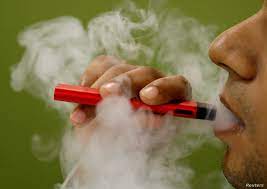
As most people are well aware, the state of Maryland legalized recreational cannabis use on July 1, 2023. This new legislation means that adults (21 years or older) can purchase cannabis at licensed dispensaries, ingest cannabis in private settings, and even grow cannabis in their backyard. An excellent summary of this legislation can be found at: mmcc.maryland.gov.
I
thought this would be a good opportunity to consider how this law might affect
cannabis use in our state and possibly develop hypotheses based on the
experience of other states that have already legalized recreational use.
Figuring It Out
It
turns out that determining the precise impact of legalization is actually quite
tricky. Let me explain: We might be tempted to compare cannabis use in
cannabis-legal vs. cannabis-illegal states. The problem is that cannabis-legal
states almost always have higher rates of cannabis use than cannabis-illegal
states, even before legalization. Of
course, this makes perfect political sense. It is much easier to pass cannabis
legislation in a state that already engages in a fair amount of cannabis
consumption.
An
alternative approach might be to compare cannabis use in states before and
after legalization, leaving cannabis-illegal states out of the discussion. This
is also unsatisfactory because any increase in consumption in these states
might be due to national trends of drug use or other factors that have little
to do with legalization. I hope you are still with me on this.
The
best strategy is often called a “differences in differences” approach, which
means that we compare the difference in cannabis use in cannabis-legal states
before and after legalization to the difference in cannabis use in
cannabis-illegal states during the same time period. If increased use is found
in cannabis-legal vs. cannabis-illegal states, that would suggest that
legalization caused the increase.
While
this might seem a little academic and boring, I think it is important for two reasons.
The first is that there are few studies that employ a “differences in
differences” approach, which makes it difficult to draw firm causal conclusions
about the impact of legalization. What I will try to present is more of a
scientific consensus. And second, as constant consumers of news media, we all
need to become a little more savvy to consider how information is collected and
analyzed, and whether there are limitations to the conclusions that can be
drawn.
Using and Abusing
We
might expect that cannabis legalization will increase cannabis use simply by
providing more access to the drug. Yet there is a general consensus that
legalization has not increased rates of cannabis use for adolescents in middle
or high school. While this is extremely good news, an important caveat is in
order: Older adolescents and young adults in the 18- to 25-year-old range
demonstrate what seems to be a large increase in cannabis use and cannabis use
disorder that appears to be due to legalization.
Much
less is known about the consequences of higher rates of cannabis use in young
adults, especially those who are starting families. For example, how will more
adult cannabis use impact marital or family relationships? How will more
cannabis use affect parenting? Will cannabis marketing and advertising be as
successful as it was for vapes? I heard on the radio that there will be more
cannabis marketing toward older adults, let the buyer beware!
Another
research area that will gain more prominence is the use of cannabis during
pregnancy. Because alcohol use harms the fetus, we caution women not to drink
during pregnancy. There is much less data on the impact of cannabis on
perinatal and neonatal outcomes, though preliminary studies suggest that
cannabis use may be quite harmful. Yet cannabis might be more appealing to
women than alcohol because it might be used to target symptoms that are common
in pregnancy, like nausea, backaches, and even headaches.
Not Yesterday’s Cannabis
The
primary method of using cannabis has always been smoking through the use of
joints or bongs. The most traditional form of cannabis is in its leafy state. Yet
there is growing evidence that legalization is changing the ways that cannabis
is consumed as well as the potency of the product. For instance, adolescents in
cannabis-legal states seem to be more frequently shifting to vapes and edibles.
These kids are also moving to higher potency forms of cannabis extracts or
resins, like oils, dabs, or shatter.
The
implications of ingesting higher potency cannabis are not fully clear but seem
worrisome. The most likely consequence is that cannabis-legal states may see
more emergencies based on cannabis intoxication, like severe psychiatric or
psychotic responses, or cannabis poisoning. These trends have already been
documented. It is also possible that highly potent cannabis will lead to more
severe cannabis use disorders, making it more difficult to stop cannabis use in
the face of the user’s mounting medical, psychological, or social problems.
The
shifting of cannabis use to edibles in cannabis-legal states should also lead
to more problems with children getting hold of it. There seems to be an
increase in these types of emergencies in cannabis-legal states, though the
numbers are currently very small. Nevertheless, it should be a reminder to keep
these products stored safely.
Driving Accidents
There
is a considerable amount of data showing that cannabis intoxication impacts
skills required for driving safely. Unlike alcohol, however, there is less
research on how much intoxication is required to harm driving skills. National
data suggest that legalization is associated with more traffic accidents and
more fatal traffic accidents, which would clearly be an expected finding. The
problem is that it is very difficult to establish cannabis intoxication at the
time of the accident. A blood sample is not helpful because cannabis remains in
the body for a long time. Behavioral testing is probably a better approach,
though the types of tasks that distinguish sober drivers from
alcohol-intoxicated drivers may be different for cannabis detection. I believe
that we will see a considerable amount of research in this area.
Taken
together, there is certainly enough data to suggest that more Maryland adults
will be smoking (or eating) pot, and that there will be plenty of unfortunate
downstream consequences because of it. The problems of increasing cannabis
potency will also need to be sorted out and will likely test the mettle of our
healthcare system. Ominously, it is unrealistic to expect that problems
emerging in the greater Baltimore community will not impact our own community.
Toward the Future
Perhaps
the best positive spin on legalization is that it might make cannabis use
easier to talk about between parents and children. As usual, I encourage all of
our readers to check the National Institute of Drug Abuse page to become more
of an expert on the effects of cannabis on the brain and behavior. It is also
important to make sure that our pediatricians take some time to speak with our children about cannabis, and that our schools have tools to
educate our kids and help families that are experiencing problems. While it is
difficult to picture what good can come from cannabis legalization, working
together as a community can mitigate some of our worries.
Michael Kidorf, Ph.D., is a
clinical psychologist, Associate Professor of Psychiatry at Johns Hopkins
University School of Medicine, and Director of Education at Chayeinu. The Where What When welcomes
readers’ questions to this column.






